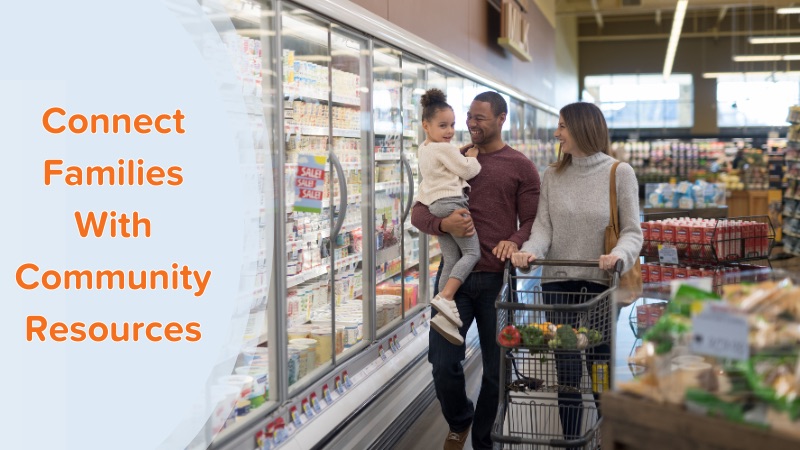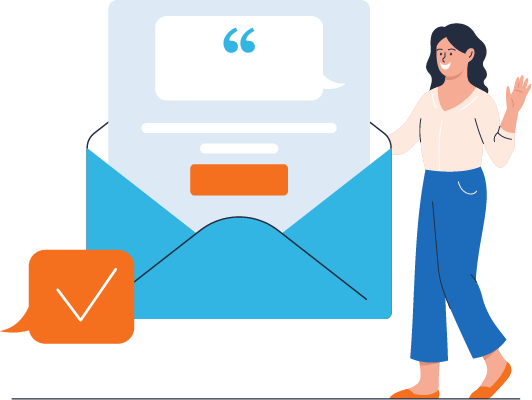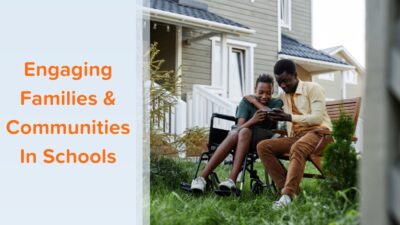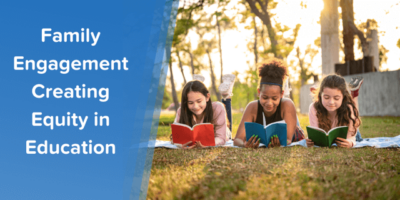Written by the ParentPowered Team; edited by Maren Madalyn
When it comes to connecting families to community resources, organizations are constantly innovating. Whether it’s a nationally provided mental health crisis center or a local parent support group, these groups are moving beyond bulletin boards and community rooms to put the right resources into the right hands, at the right time.
Finding the right combination of relevance and timing is the key to support families with actually engaging with and using available resources.
Lessons from the field about connecting families to community resources
Through our custom work, ParentPowered has done quite a bit of resource hunting with our community partners across the United States. We are always struck by each partner tailored their community resources to their families’ specific landscape, culture, and experiences.
This observation became a cornerstone principle to designing a complementary tool to our Trauma-Informed family engagement curriculum called Community Support Stream. Together, the program and tool connect families through text messages to something new from our partner’s curated set of community resources every week. Every resource and message shared feels personal and reflects the importance of providing both the family and their children support from community organizations around them. After all, family engagement is essential to both student and community thriving.
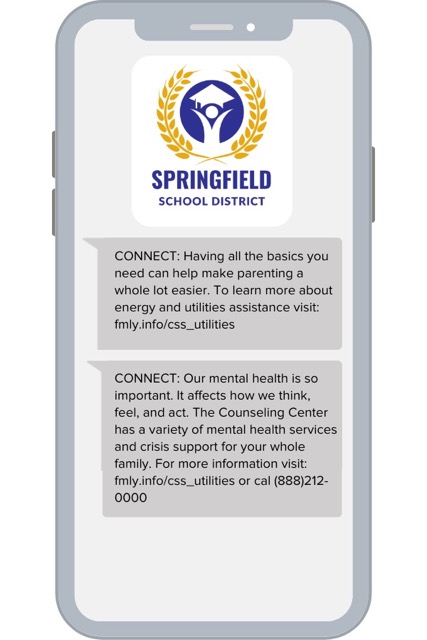
In this article, the ParentPowered team shares the lessons we’ve learned from our community-based partnerships, lessons that you can apply to get family resources into the right hands at the right time.
1. Build your resource web first
Our first key takeaway from working with so many community agencies and family resource centers is that supports are incredibly varied. Some programs provide early head start services to families of young children, while others specialize in vocational services for adults. Even among like programs, resources look different.
Complicating matters is the fact that resources may be scattered or live in multiple places. When we ask new partners for the 25 family resources they want sent to their community, some say “no problem.” However, others may heave a big sigh. For every partner brainstorming their family resource list from scratch, another sends us a 32-page booklet of services.
There are three categories of community resources that partners share with their families. All three have an important role to play, and together they make a powerful pyramid of concrete and important resources that your families will find useful.
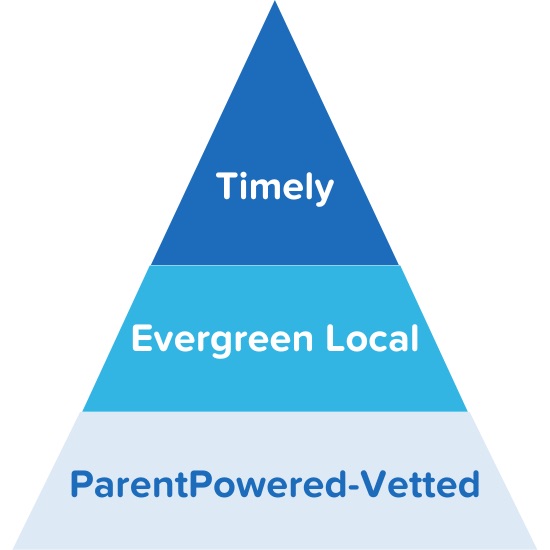
- ParentPowered-vetted resources. These offerings include federal government programs, parenting supports, and national crisis supports. They are the sturdy foundation in your organization’s resource guide.
- Evergreen local resources. You know your families and community best. These resources help family members get the specific and unique support they need in their locale, with their community context in mind.
- Timely resources. These offerings include information, activities, and services needed in the moment. They may be seasonal, such as summer learning to reduce summer slide, or connected to specific events happening around parents, such as early care for a newly pregnant mother.
Now it’s time to put your list of family resources together. Our partners have found the following guidelines make the process smoother when compiling their guide for children and adults alike – whether they’re hunting for new services or whittling down a longer list.
Start with the fundamentals
The most common resources shared by our partners focus on the basic needs of families. That means connecting families to community resources that can provide food, clothing, housing, utilities, transportation, and even child care. Focusing on these fundamentals is a great place to start your core list of essential community resources as opportunities to deliver immediate and direct benefits to families.
Fundamentals also includes knowing and respecting your families’ cultural backgrounds. Explore our recent article to unpack culturally responsive family engagement.
| Financial assistance programs | Legal resources |
| Emergency shelters | Respite resources |
| Mental health services | Food assistance programs |
| Medical care and health services | Domestic and child abuse services |
| Crisis intervention services | Homeless services |
Look beyond your community
Just as there can be food deserts throughout the United States, there can also be resource deserts. Areas lacking local supports make it difficult for families to get the help they need, when they need it. This is where many programs turn toward a national center or state provider for help to bring services into the community.
If you don’t have a local option for certain community or family support services, research state, regional, and national resources. There are many great options that your organization can take advantage of or that you can share directly with parents.
Make it a group effort
The Community Asset Mapping process can become quite the project for our partners. It takes time and often needs multiple team members to build a full resource guide – one person may not be the expert in every category! Connect with and tap into your community network. Someone you know may have just the information you need to round out your community services and family offerings.
“We were able to gather family advocates, supervisors and other specialists in our program to connect resources we found most needed for our families. [ParentPowered’s] support has allowed us as a program to provide quality resources to our families throughout our region.”
– Aubrey Cooper, Education Coordinator at Kawerak Head Start
Check every link and phone number
We’ve all had the experience of calling a phone number for something we need, only to hear a dial tone or worse, “This number is no longer in service.” It’s a frustrating experience for anyone, but roadblocks like these create bigger challenges for families trying to get help for their child or themselves. A disconnected number or broken website link may even discourage community members from reaching out to family resource centers in the future.
This is why we guide our partners to test the contact information for each family support service and community organization listed in their offerings before we fold that option in their Community Support Stream — including the phone number, email address, and website link for each online resource cited. A dead link is a dead end!

While it takes some time, it’s worth it to provide a good experience for connecting families to community resources. It also helps ensure families can access family resource centers or other community based services on their first attempt.
Yes, building your basic resource guide can require additional work. But once it’s complete, you’ll feel great knowing that you’re connecting families to community partners and resources at the right time and place. One of our favorite things to see is how many families click on our partner’s shared resources each week. This data tells us and our partners that families are connected with the right support at the right time!
2. Think about the whole caregiver
Most of the children and families our partners serve are in a state of need, even in a state of crisis. Of our U.S. partners where we have household income data, 64% of children we served in June 2020 qualified as economically disadvantaged, historically referred to as ‘low-income families’. However, this doesn’t mean that families only seek community services that meet basic needs or only need help while in crisis.
On our partners’ ParentPowered dashboards, we can see which of a community’s resources are most often clicked by their families. By collecting this feedback, we’ve learned that caregivers also want:
- Activities that help them engage with and support children at home
- Self-care resources for their own health and well being
“The ParentPowered Community Support Stream is so important to our program. It provides a way for families to have access to supports they may have not known about before and have a way to reach out easier for help.”
– Aubrey Cooper, Education Coordinator at Kawerak Head Start
Some of the most-accessed community resources are those that empower parents to nurture their relationship with their child. As you craft your resource web, add ones that inspire your families to feel great about themselves and their parenting.
3. Messaging matters
Cataloging existing assets and identifying which are the right ones to send to families are only the first two steps. Next comes crafting your message around an asset, a critical part of encouraging your audience to explore that opportunity and other resources shared in the future.
Think about the difference between these two messages for families to highlight available self-care services and resources:
Version 1

Version 2
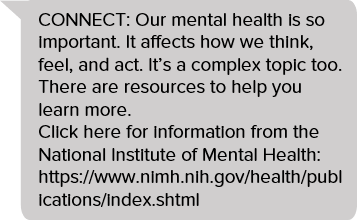
It is evident that Version 2 provides both a personal touch and important context needed for this resource to educate families about the national center providing it and why it matters. Contextualizing your family resources does several important things:
- It helps families self-identify needs. The language you provide around the message will help the family to determine which of their needs this resource would meet. When families receive messages referring to specific agencies they know or locations they’re familiar with, it feels personal, like this resource is intended especially for them. The more specific the family resource feels, the more likely it is that the family will use it.
- It quickly explains the value of a resource. A short explanation of why your organization sees this resource as important enough to share can transform a family’s response from “why am I getting this message?” to one that sparks curiosity to learn more about the highlighted services.
- It normalizes the need. Many people have complex feelings about accessing community or family resources. They range from fear of stigma to a sense that others need it more than they do. Assuring families that they’re not alone if they want support can nudge them to learn more and use critical services.
Crafting a targeted and succinct message helps families engage with the right family resource centers or community partners that meet their specific needs. Which brings us to our last insight…
4. Make it easy
Wherever possible, make any and every attempt to connect families to a support system as easy as possible. Minimizing the barriers that families face just increases their opportunity to actually use community based services. There are two ways to keep access easy for families.
Share resources at the right time
An important lesson we’ve learned is that it’s critical for partners to reflect on what their community needs most right now. Building a laundry list of every possible resource drains your team and makes it challenging for families to take advantage of the information.
Does your organization or its community partners offer educational programs that help students transition back-to-school? Send messages to families in early summer, not the middle of winter! Are there local food pantries and other food assistance organizations with programs to support families during the winter holidays? Let families know about them throughout fall and during the weeks leading up to them.
Connecting families to community resources at the appropriate time makes them more relevant for families and increases families’ chances of engaging with them.
Keep your message short
We know that many families are often busy and stressed. And we’re all experiencing the information overload that comes with living in the 21st century! All of this means that if there are too many words in your family messages, it may result in few to no messages read.
Of course, if you know ParentPowered, you probably can guess what we’re going to say next: text it!
We strongly encourage you to reach families by text message because:
- Text messages offer a structured way to ensure your note must be short and sweet
- Text is the most universally used technology – 98% of US adults under 50 use text! (Pew Research Center, 2021)
- Text is 400% more likely to be read than an email (Pew Research Center, 2021)

The easier it is for families to learn about family resource centers, programs, or community services, the better the chances are that they will actually use them!
For more innovative approaches to family and community engagement, explore this research round-up.
Access to the right resources benefits everyone
Connecting families to community resources is key to supporting their engagement in their students’ learning and fueling equity in education. Putting these lessons into practice can help families access the support they need, when they need it. Whether through direct services, comprehensive family resource centers, or just-in-time school programs, we know that when families thrive, communities thrive!

